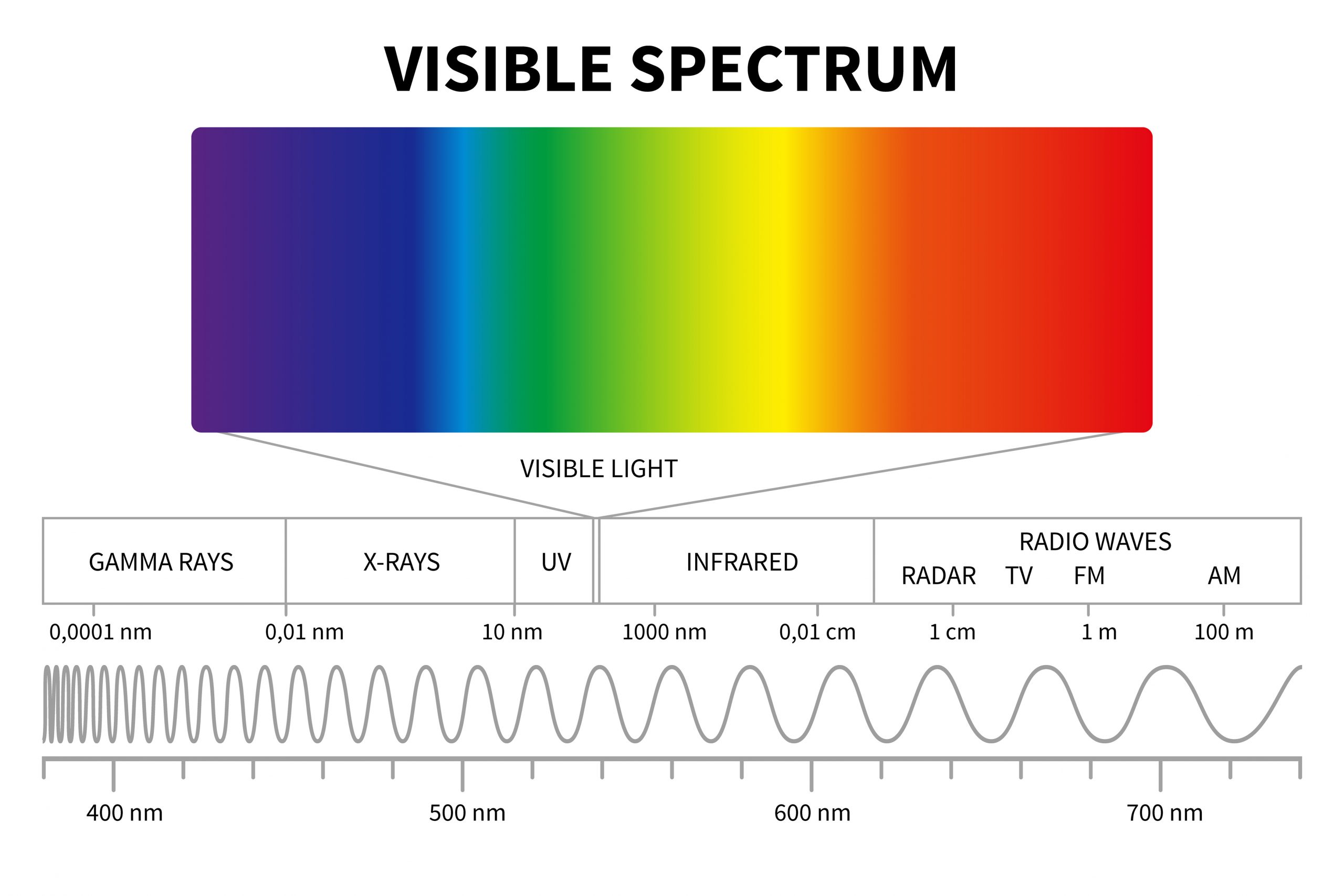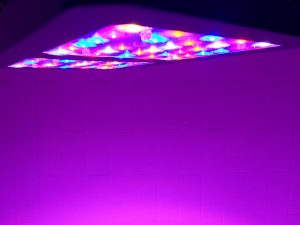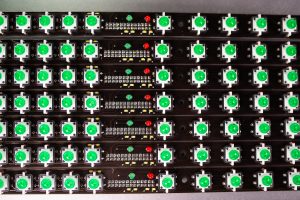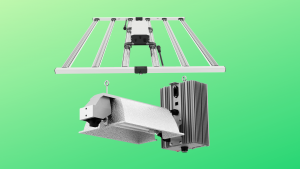In this post, we’ll have a look at one of the foremost important criteria you ought to consider when buying an LED grow light, the color spectrum. If you don’t get the proper color of sunshine, plants will just not grow well, irrespective of what quantity you spend.
If you’re looking to urge a replacement grow light, you ought to really consider LED lights since their far more energy-efficient. that’s good for your pocketbook furthermore because of the environment. the matter is that selecting the correct kind of light is not any trivial matter. The market is filled with products in an exceedingly wide price range and lots of manufacturers are making claims that are designed to confuse you.
If you only need a quick answer, head on all the way down to the last section called, the simplest spectrum for LED Grow Lights. If you wish to know what you’re doing so you’ll be able to make an intelligent choice, read the entire post. I promise I won’t get too technical with you.
What is a Color Spectrum?
Plants are genetically programmed to grow using sunlight, which we envisage to be white light or yellowish-white light. This light looks white because it contains all of the colors of a rainbow, and when these colors are all mixed together they give the impression of being white.
A spectrum could be a graphical display of every one of the colors within the light.
Scientists use wavelength numbers to talk over the colors rather than color names, which could be far more accurate thanks to measuring the color. So a red may need a wavelength of 630 or 660. Both of those look red to us, but they’re actually different colors.
Grow lights that use florescent bulbs, confer with the color of the bulb as cool white (has bluer), or warm white (has redder). That was useful for fluorescent lights, but such designations don’t work well for LED lights. When it involves LED it’s more accurate to speak in terms of wavelengths and to display the particular spectrum.

Color Spectrum of the Sun
The light from the sun contains all colors as you’ll see from the image above. it’s more blue light (higher relative intensity) than red.
Which Colors do Plants Use?
Plants use light mostly for photosynthesis and this is often finished with specific chemicals within the leaves. samples of the more important chemicals include chlorophyll and B. within the absorbance spectrum (measures what proportion light is absorbed) you’ll clearly see the peaks within the blue and red regions which suggests that these colors are used for photosynthesis.
Almost no light is absorbed within the green range.
This has led to the wrong conclusion that plants only need blue and red light.
The Myth of Blue and Red
The idea that plants grow well with only blue and red light is of course a myth. The above visible spectrum is for purified chlorophyll during a tube and it doesn’t show you what happens in a very plant leaf. Photosynthesis is more complex and involves other chemicals like carotene and xanthophyll. A spectrum of the sunshine absorbed by the entire leaf shows that plants actually use a wider range of wavelengths, including green.
It is true that blue and red are important and represent most of the sunshine employed by plants, but other colors, including green and yellow are used for photosynthesis.

Different Colors Do various things
NASA has done extensive work on the sunshine employed by plants and that they have determined the subsequent.
Red Light (630 -660 nm) is crucial for the expansion of stems, additionally because of the expansion of leaves. This wavelength also regulates flowering, dormancy periods, and seed germination.
Blue Light (400 -520 nm) has to be carefully mixed with light in other spectra since overexposure to light during this wavelength may stunt the expansion of certain plant species. The light within the blue range also affects the chlorophyll content present within the plant further as leaf thickness.
Green Light (500 – 600 nm) penetrates through thick top canopies to support the leaves within the lower canopy.
Far Red Light (720 – 740 nm) also passes through dense upper canopies to support the expansion of leaves located lower on the plants. additionally, exposure to IR light reduces the time a plant has to flower. Another good thing about far-red light is that plants exposed to the current wavelength tend to supply larger leaves than those not exposed to light during this spectrum.
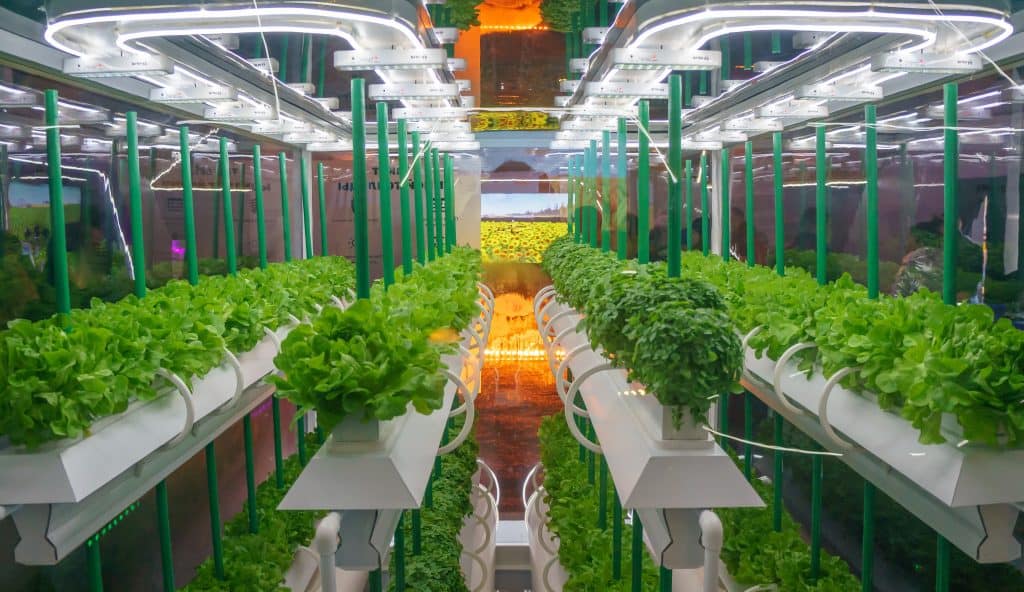
Best spectrum Depends on Your Goals
As plants mature and undergo their growth cycle from seedling to adult, and so flowering and fruiting they use different color spectrums therefore the ideal LED light is different for every stage of growth.
The best spectrum also depends on the kind of plant you’re trying to grow.
This can get very complicated and is admittedly only important for commercial growers where they need to maximize results.
As a general rule, plants do best with the light of all wavelengths, but they don’t need equal amounts of every.
Color Spectrum of LED Bulbs
It is important to differentiate between LED bulbs and LED lights. An LED light is that the complete fixture and it can contain one or more LED bulbs; usually over one. The LED bulb is that the small individual component that creates light.
LED bulbs exist for specific wavelengths. This image shows the spectra of three bulbs; blue, yellow, and red. Note that every bulb produces a reasonably narrow spectrum. The blue bulb as an example is about 60 nm wide and contains only blue light.
Since many folks believe that plants need only blue and red light, many of the lower-cost LED lights to offer only blue and red LED bulbs. This looks as if an ideal solution, especially since blue and red LED bulbs are more efficient and fewer expensive than other colors.
A lot of the LED grow light pictures on the web show a ‘purple’ light – the industry name for the color made by employing a combination of blue and red LED bulbs.
LED bulbs are now available in additional than a dozen different colors.
How does one Make White Light With LED?
As described above each LED bulb contains a specific wavelength, but none of them provides a full white spectrum just like the sun.
One solution for providing white light is to mix different colored bulbs into one fixture. Basic units combine blue and red. More advanced units will include yellow and green bulbs. Since a typical fixture contains many bulbs, it will be customized to supply different amounts of every color. Mix enough different colored bulbs and you have got white light.
Another way to form white light is to coat the bulb lens with a phosphor compound. Such bulbs usually use a blue light that hits the phosphor and it produces white light. this can be like the way fluorescent bulbs work.
White LED bulbs would appear to be the simplest alternative but there’s a catch. Whenever light is converted to other colors, a number of the intensity is lost during the conversion. this suggests white bulbs produce less light than equivalent LED bulbs without the phosphor coating. White bulbs are dearer. Even with these limitations, they’re becoming a preferred option for grow lights.
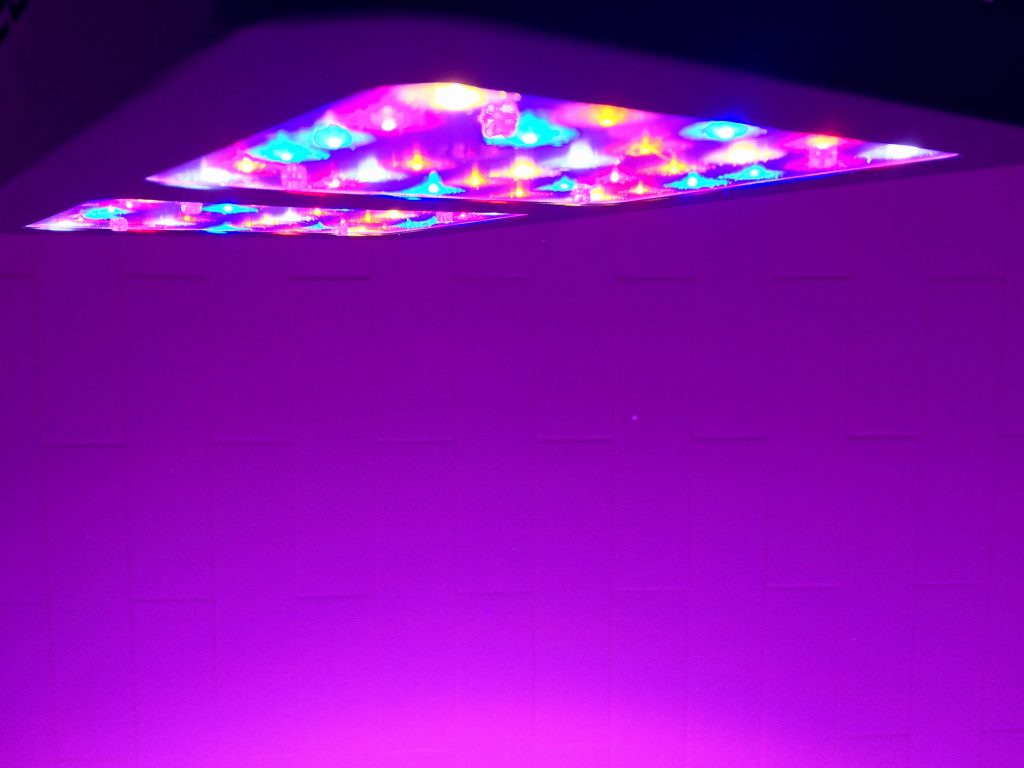
The Myth That White Light is nice
The sun produces white light, and plants do best after they receive all colors of the spectrum, so it seems reasonable to conclude that the most effective LED lights are white lights. and lots of manufacturers try and convince customers that this is often true with comments such as:
“Our LED provides the optimal full spectrum which provides plants, veg and flowers all told stages of growth with everything they have from natural sunlight”
or
“Our LED lights replicate the spectrum of the sun”
The problem with this logic is that plants don’t need a light that appears white to us, nor do they have a light that mimics the sun. Plants do best with a lightweight that features a lot of red and blue and smaller amounts of green and yellow.
White light isn’t important for plants – having the proper amount of every wavelength is very important.
Making plenty of white light to impress us may be a waste of energy.
Intensity is additionally Important
So far we’ve got focused on the color spectrum which is extremely important, but strength is additionally important. For years the go-to grow light for greenhouses has been a high-intensity sodium lamp. I’ve got used to it for years and it works great for both seedlings which require lower levels of sunshine and flowering orchids which require high light. it’s an awful traffic light with only a tiny low amount of blue, but at 400 watts it’s really high intensity. The high intensity implies that while blue could be a minor component of the sunshine there’s still enough to grow plants.
The white LEDs mentioned above seem to be an ideal solution, but they need a lower intensity than non-coated bulbs. For this reason, non-coated bulbs are still a decent option.
Don’t calculate Lumens
Intensity is very important, but how does one measure it?
A common thanks to trying this is to live lumens, which may be a measure of how bright a lightweight is. the matter with lumens is that it measures how bright the sunshine appears to the human eye and our eyes see green and traffic signals far better than blue and red.
A light that produces mostly blue and red won’t look bright to us, and so it’ll have a coffee lumen number. A yellow-green light, giving off the identical number of photons, looks bright to us so it’s a high lumen value. But this high lumen light doesn’t have the optimum spectrum to grow plants. Lumens are great for choosing a light for the house but mostly useless for choosing LED to grow lights.
You might wonder how lumens relate to LUX and foot candles. Lux is lumen/m2 and foot-candle is lumen/ft2.
PAR and PPDF
Scientists have come up with a higher way to measure light for plant growth, called PAR (Photosynthetically Active Radiation) . PAR defines the relative amount of sunshine plants use for photosynthesis within the range of 400 nm to 700 nm.
The term is often used incorrectly as a measurement of the number of sunshine as in:
“PAR is that the amount of sunshine that’s usable to plants”
or
“This may be a system that features a high PAR output which suggests the fixture gives off 2 to three times the intensity of other grow lights”
These statements are meaningless since PAR defines the spectra that are being considered, NOT the number of sunshine.
The amount of sunshine is truly measured as PPFD (Photosynthetic Photon Flux Density), sometimes abbreviated to PFD. The industry and gardeners tend to interchange the 2 terms using the term PAR once they should be saying PPFD.
PPFD could be better thanks to measuring the number of sunshine for LED grow lights, than lumens.
Even this contains a problem. Since it only looks at the most visual spectra (400-700 nm) and ignores near UV and near IR, it misses some wavelengths that plants can use. But it’s the most effective and commonest system we’ve got at once for evaluating grow lights.
The Best visible spectrum for LED Grow Lights
What is the most effective visible spectrum for LED lights? It should be near the spectra employed by plants. many blue and red, and a few green and yellow. Add some near IR and perhaps even near UV and it’s even better.
Don’t worry about matching the sun or white light.
I think it’s important to determine the output spectra of a lightweight before you get, but most manufacturers don’t show these. The new proposed labels for LED grow lights, will show PPFD (called PFD) for various ranges of wavelengths, including the PAR range.
Comparing PPFD values is that the next neatest thing. a better PPFD will provide more light for plant growth.

